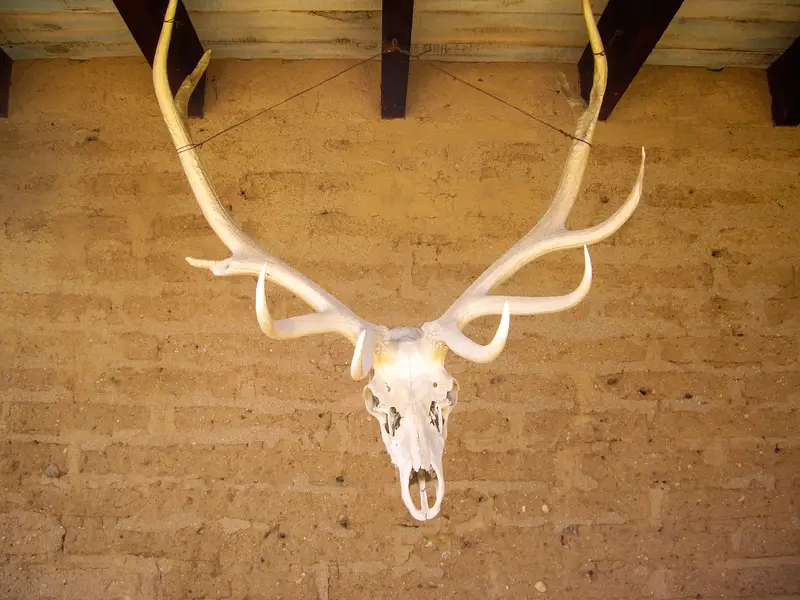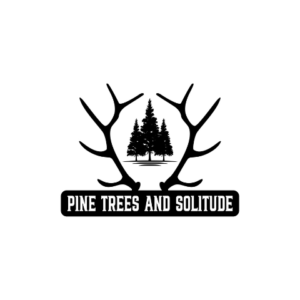
Many hunters hear the word taxidermy and shudder at the thought of handing over hundreds or even thousands of dollars for a new mount. That said, in addition to the meat from harvested animals, you’ll probably want to save the antlers too.
European mounts are an affordable way to display your trophy, but if you prefer to have a shoulder mount, that’s great too! Below, you’ll learn how to do a European mount and how to cape an elk or deer.
What Is a European Mount?
A European mount is when you boil the skull of the animal (Elk or Deer), and allow the antlers to remain intact. Afterward, they are usually displayed on a plaque or a low-profile European mount hanger.
How to Do a European Mount
Doing a European mount yourself is a very rewarding experience and it’s cost effective. You’ll save around $100 for a deer and even more for an elk.
How Long Does It Take for a European Mount?
Once you learn the techniques below, it shouldn’t take longer than a few hours to clean a skull and up to 24 hours or sometimes longer to whiten it when using peroxide.
What Do You Put in the Water When Boiling a Deer/Elk Head?
While there are many different things hunters and taxidermists add to the water while doing a European mount, the most common is dawn dish soap to remove grease and baking soda which helps get additional meat off. Use around 8oz of baking soda and about ½ cup dish soap, it doesn’t need to be exact.
What Is the Best Thing to Boil a Deer/Elk Skull In?
There are a wide variety of pots and tubs that’ll work for boiling deer and elk skulls in. The best container is just big enough to fit the entire skull. Turkey frier sets typically work very well for deer, elk need bigger containers. For elk, a good option is a water-tight galvanized tub that can be found at farm or home improvement stores.
Do you have to skin a deer skull before boiling? How to Prepare the Skull for the Boil.
The best way to prepare an elk or deer skull to boil is to completely skin the skull by removing all of the hide or skin, eyes, tongue and lower jaw, and as much other soft tissue as possible. You want to be careful here to not scrape the skull with your knife, if you do, the cut marks may be visible once the skull is complete.
How Long Do You Boil a Deer Skull for European Mount?
How long you boil a deer skull will vary depending on how well it was prepared and how hot the water is. The truth is, you shouldn’t boil the skull, you should simmer it. If you boil it, you may make the skull brittle and bones can even start to fall apart.
Simmering the skull will take you around 1.5 hours to 3 hours. You should take the skull out and scrape it with a stiff knife periodically to remove as much tissue as possible. Typically, this is done 1 or 2 times. Further, you should replace the water and baking soda between scrapings.
Once all the meat is removed you should use a hose and spray the skull down with high pressure but there’s a fine line. You want to use enough pressure to blow out any leftover tissue but not so much you break bones while cleaning the skull cavity, nostrils, and eye sockets.
Once clean and devoid of tissue, place the skull back into a container with hot soapy water and let it sit for another 30 minutes to help degrease the skull.
What Peroxide to Use for Euro Mount?
Hydrogen peroxide is used to whiten the skull. Fill a pot just big enough to fit the skull with 3-6% hydrogen peroxide and let the skull soak until it’s as white as you want it. Ensure that the peroxide does not touch the antlers because it will whiten them as well. You can use plastic wrap and tape to protect the antlers.
When you are finally ready to put the mount on the wall you and use a kit like this one to secure it to your wall.
(Pinetrees and solitude may earn a commission from affiliate links in this article.)
How Do You Preserve an Elk Head For Taxidermy? How to Cape the Animal Correctly
Preserving an elk head for taxidermy is easy. The first thing you need to do is cape the animal. Remember to use a sharp knife and cut with the blade facing up and sliding it under the hide. Follow the steps below to cape your animal.
1. Cut along the spine starting at about the middle of the elk to the back of the head. If you’re unsure where to start, start a little further back than you think.
2. Make your vertical cuts around the sides of the elk up to the back cut.
3. At the back of the head, make a “Y” cut to the back pedestal of each antler
4. Cut and pull the hide around the pedestals
5. Work the hide down over the head, and pull it, once you get to the ears, cut through the base of the ears on both sides.
6. Carefully work the hide to the eyes and around them, you want to include the tear ducts with your cape.
7. Continue working the hide down, cut through the nose and carefully work around the lips so that they are included in the cape as well.
Once completed, cool down your cape by placing it in a cooler or freezer as soon as possible. Once it’s cooled down, roll it, place it into a large contractor bag, and freeze it until you can get it to a taxidermist.
What Is the Best Mount for an Elk and How Much Does it Cost to Mount an Elk Head?
The best elk mount is whatever you like best and what you can afford. Having an elk shoulder mount done professionally will cost around $1,500 to $3,000 depending on position and individual taxidermist prices.
European mounts are much cheaper and taxidermists typically charge between $150 for boiled and $350 for beetle cleaned. Taxidermy prices vary widely by experience and quality. Make sure you shop around and look at their work before dropping off your animal.
If you enjoyed this article, here are some more helpful articles from Pinetrees And Solitude.
- How Much Is A Mule Deer Hunt? Guided vs. DIY
- What You Need For An Idaho Mule Deer Hunt
- Catch Mule Deer While They Are Active
- What Should I Bring Elk Hunting? Idaho List
- Hunting Elk In Timber: Tactics To Even The Odds
(This article was originally published on Pintreesandsolitude.com. If it is now published on any other site, it was done without permission from the copyright owner.)
